Cutaneous fold theory, evolution and pathology
A fold starts out as a groove in your skin, an inward indentation with very little consequences.
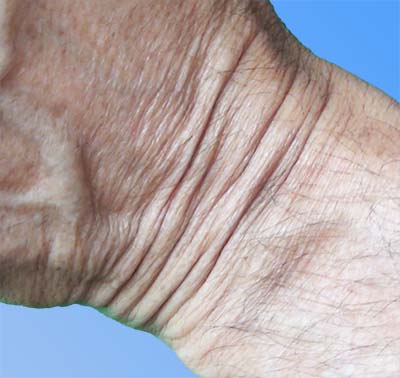
However, when repeated folding causes the fold to become permanent, it has repercussions on many components of the skin and on everything that lies beneath it.
On this page
Folded skin
Skin is a living tissue
Skin is a multi-layered tissue containing a large number of living constituents that are essential to your well-being such as: sweat glands, hair follicles, sebum glands, specialized receptors for pain, touch, temperature, vibration, ....
Every region of your skin is irrigated and innervated by a complex system of branching blood vessels and free nerve endings.
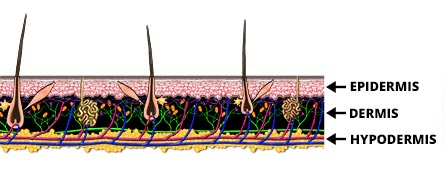
Skin is flexible and extensible; it folds easily.
This suppleness is essential, because the skin covers articulated parts of the body where it gets stretched, compressed and creased.
It has to fold.
Folds deteriorate the skin
Even if the folds are a normal occurrence, they degrade the skin.
Occasional folds become permanent ones.
Strips of skin stay imprisoned inside the folds and this situation cannot be considered healthy.
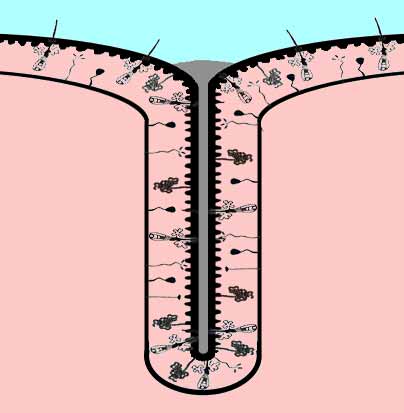
Both sides of the fold become walls, facing each other.
They are held together by new living epidermis cells, created in a process called superficial cicatrisation that is designed to prevent further damage to the skin.
Types of folds
Several attributes can be used to distinguish and differentiate the folds in human skin.
Folds can be grouped according to their orientation, their depth and their angle, but mostly by their location, their progression, ...
Occasional and permanent folds
Folds have two phases in their evolution;
•At first, they are not etched into the skin and only appear when a movement creates them.
•Then, they slowly solidify, deepen, harden and tighten to become permanent.
The folds start out as occasional events, but at some point, they build up and consolidate to become permanent.
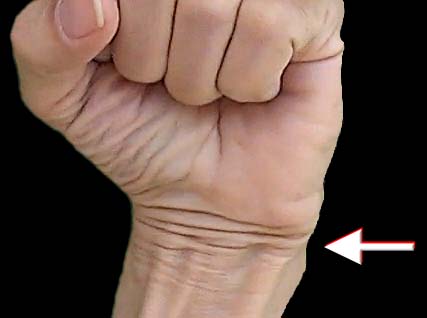
At birth, humans already exhibit several permanent folds that were created by the actions of the fetus during the pregnancy.
The evolution of the fold and the processes involved are described lower on this page.
•How long is a fold?
•Most folds are circular.
Folds have a tendency to go for as long as they can.
For this reason, most large ones circle completely around your body.
The folds keep on going until they fall back in their own crease.
Usually, some sections of each fold are visible, but long stretches can be completely undetectable, even when looking closely.
Fortunately, the folds can be felt with your super-sensitive nails.
| Circular folds with invisible sections |
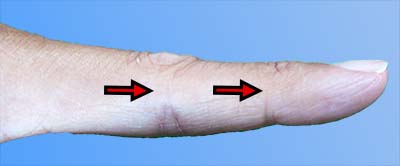 |
The vast majority of the folds on your body go all the way around it, even vertically up and down.
Some folds that are specific to a particular feature, such as the mouth, may circle around it.
Most diagonal folds aren't circular; they have short paths and are placed between two large fold crossings.
Articulation folds
Most folds are caused by movements of the body.
The body is segmented and can only bend in specific places; at the articulations.
The skin that covers the joints is tubular.
Finger tubes, arm tubes, leg tubes, neck tube, trunk, ... all these tubes are vertical.
The joints only work in one way and do not permit flexing in the opposite direction.
This means that the skin tubes are always bending on the same side.
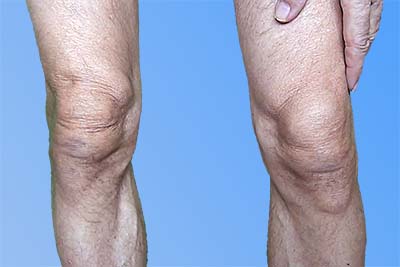
Articulations are really problematic.
The skin covering these moving parts gets repeatedly stretched, compressed and crumpled.
Anytime you flex a joint, several folds are formed.
The skin becomes pleated and some sections are pressed into the articulation.
When the skin gets attached and entangled in the mechanism, pain can be generated anytime the articulation is flexed.
Compressed and stretched folds
The structure of each articulation only permits flexing in a specific manner.
The extent and direction of their motion is limited.
Joints can bend easily on one side, but not on the other.
Because of this, different kinds of folds will develop on each side of an articulation.
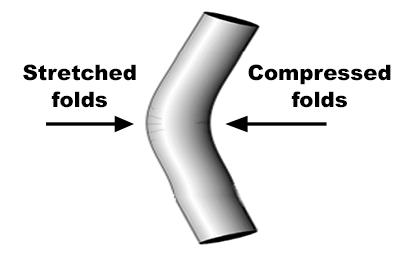
•Stretched folds; On the outside of the articulation; where the skin is spread and expanded when the joint is closed, but it drapes and dangles when it is straightened.
They are small and numerous, but they aren't very deep.
•Compressed folds; On the inside of the articulation; where the skin is squeezed and constricted. They tend to be few in number, but tightly folded and deep.
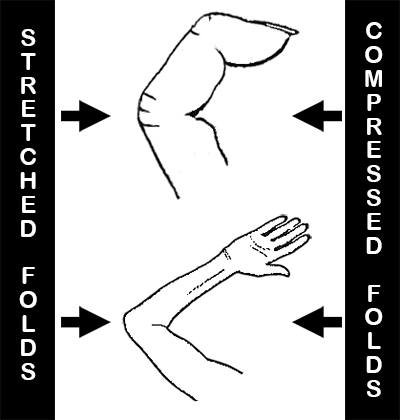
Both types meet on the sides of the skin tubes, creating circular horizontal folds.
Complete folds and surface folds
Folds can also be differentiated by their depth, so you will find:
•Complete folds; where the whole skin, epidermis, dermis and hypodermis, is entirely bent over.
Many complete folds are formed early in the life of an individual, when the skin is still supple and thin, but they keep on developing until you die.
Complete folds start out as surface folds.
•Surface folds; also called wrinkles, where shallow and small grooves only bend the top of the skin.
They proliferate by creating lines between your existing fold crossings.
Fold angle
Most folds aren't perpendicular to the skin’s surface.
Their path is angled because one side receives more pressure.
In some cases, the walls of the fold become almost parallel to the skin’s surface.
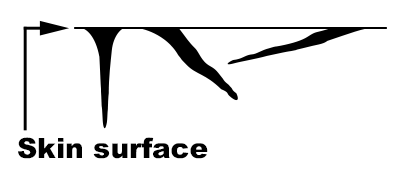
Fold evolution
•How does skin respond to excessive folding?
•With superficial cicatrisation.
Your skin can endure a lot of folding without damage.
But, when the folding occurs in the same places, over and over, day after day, because of your repetitive movements; your skin can't take it.
It reacts with superficial cicatrisation.
Damage done by repeated folding
If your skin were to be folded only occasionally, of course no damage would occur.
But think of how often you wink, swallow, talk or eat and you’ll understand that folding represents a real challenge for your skin.
You know the impact folding has on objects.
You probably fold some things repeatedly to separate or divide them.
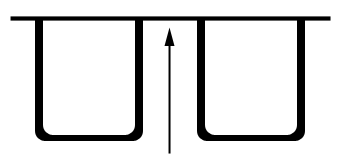
How damaging the process is depends on;
•The rigidity and elasticity of the folded material,
•How long you do it,
•At what speed,
•What vigor is applied,
•...
Repeated folding provokes superficial cicatrisation
When the skin is folded repeatedly, heat builds-up on the floor of the fold.
The structural integrity of the material is put to test and some may be mutilated in the process.
Luckily, skin is unbelievably flexible and elastic.
It can be folded thousands of times without damage.
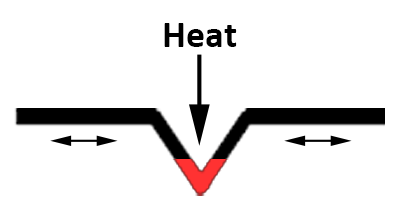
However, when things get really hot, your skin has to protect itself.
Your skin treats folds as injuries and tries to repair their damage.
The heat build-up triggers superficial cicatrisation to coat the area with fresh epidermis cells.
This wound healing process involves the formation of a new layer of epidermis cells at the bottom of the fold to protect the skin.
Coating the fold’s floor with epidermis cells
While the repeated folding is occurring, the excess heat is concentrated all along the path of the fold, on its floor.
In reaction, the skin will pave the bottom of the fold’s route with a fresh coat of epidermis cells to prevent any tearing.
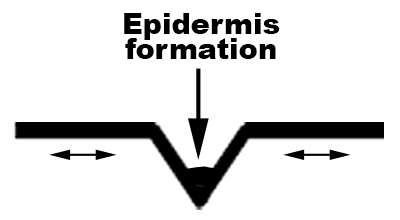
Over time, superficial cicatrisation will come into action several times on the same fold.
This creates a piling up of layers of epidermis cells and a deepening of the fold.

Fold pathology;
The consequences of folded skin
Inoperative trapped skin components
Part of the skin becomes engulfed into the fold.
Some hair follicles and sweat glands, that normally expel their content at the surface, now see their exits blocked.
The nerves and blood vessels get bent and folded over, causing all kinds of problems.
But the folds, and their crossings, are first noticed by the pain they produce.
Main health problems caused by cutaneous folds
Mild to acute pain
Cutaneous folds are the main cause of pain in every location on the body.
Pain in the shoulders, in the arms, in the hands, in the back, in the knees, in the feet, ... they all have the same cause; folds in the skin.
However, the pain is mostly concentrated in the places where two folds meet; the folds crossings.
● More on cutaneous folds and pain.
Loss of sensation, insensitivity and numbness.
Cutaneous folds bend the nerves that pass beneath them and weaken the signal transmitted to the brain.
Each nerve travels from a specific part of your body to your brain.
However, along the way, they are susceptible to being bent, compressed or pinched by the folds in the skin.
When the strength of the signal the nerves transmit is diminished, you slowly lose contact with some body parts or functions.
● More on cutaneous folds and loss of sensitivity.
Blood circulation
Cutaneous folds bend, compress and strangle the blood vessels and veins beneath them.
They are the main cause of high blood pressure (hypertension), and reduced blood circulation.
Folds are often the source of blocked blood vessels and arteries (atherosclerosis), numbness and tingling (paresthesia), varicose veins, and more.
● More on cutaneous folds and blood circulation.
Aging
When you see aged skin, you see folded skin.
In fact, the folds are responsible for the most disturbing aspects of elderly life such as: chronic pain, loss of mobility, circulatory problems, loss of sensitivity, ugliness, ...
● More on cutaneous folds and aging.
Uglying
Ugliness is not a health problem, but it can have a negative impact on someone's social and sexual integration.
Folded skin is ugly.
The more a skin is folded, the uglier it is.
● More on cutaneous folds and beauty.
Here are a few common skin deteriorations:
• Cellulite
Cellulite is characterized by visible patterns of bumps and lines on the skin.
Of course, those lines are caused by deep folds.
Cellulite can be groomed away with pressure strokes.
• Stretch marks
Stretch marks, also called «Striae», are simply folds that are pulled open by an enlargement of part of the body, usually due to puberty, pregnancy, muscle building, weight gain, ...
Normally, the folds are kept closed by the epidermis formed within each one to protect the skin against tearing.
When a sudden growth happens, the stretching pulls on the skin and opens some folds.
Since part of their protective hardness is removed, they feel soft.
Stretch marks follow parallel fold patterns
Stretch marks can often be observed as parallel grooves in the skin.
This parallelism and their generally vertical orientation only validate the fact that they are folds.
Stretch marks can be groomed away using pressure strokes.
• Varicose veins - Blood flow obstructed by folds
Folds hamper blood circulation.
When the skin gets folded, the blood vessels that flow within it get folded also; they are flattened and crushed.
Their passages become constricted and the blood can't flow normally.
At the point where the folding occurs, the veins enlarge because the blood can't go forward anymore.
The blockage causes the formation of a reservoir of blood that can be unattractive.
Use pressure strokes on the folds next to the blood pools to free the veins.